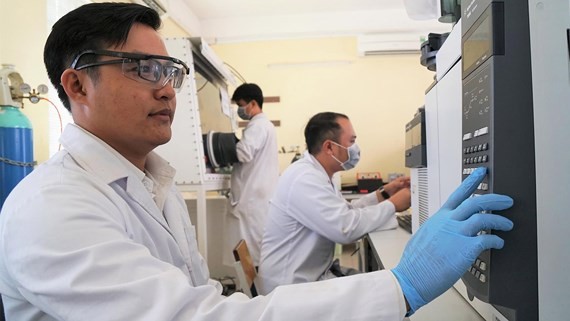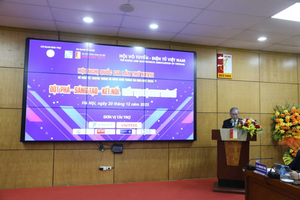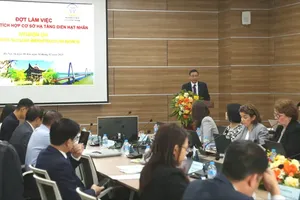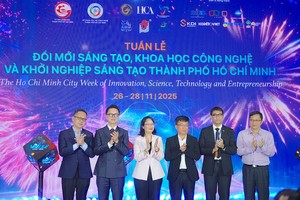
The worldwide race to find better, cleaner, and more durable sources of energy is as frenzied as it gets. As for fuel cells, the more durable they are and higher capacity they have, the better. The recent boom in electric cars usage, most notably the Japanese’ plan to utilize them in transporting athletes during the 2020 Olympics, demands that the fuel cells for these cars be improved to store and transport energy quickly, and more importantly, with better sustenance.
This matter has recently seen a solution through the project named "New-generation nanomaterials – Manufacture and Application in fuel cells for future mobile engines", executed by PhD. Nguyen Van My – a researcher at the Center for Research of Nanostructured Materials and molecules.
According to Mr. My, developing materials to make proton exchange membranes capable of operating in physical conditions is being explored intensively. Traditional materials used for these membranes are perfluorosulfonic polymers (PFSA), or fully hydrated Nafion, which can transfuse proton at about 1 x 10-1 S cm-1 at 800C. However, their relative humidity (RH) should be higher than 98%. At current rates, only a small fluctuation in temperature can cause water to condense, leading to lower fuel cell performance and higher cost to maintain an ideally high humidity.
In addition, hydrogen fuel cells need to perform well at high temperatures to reduce CO poisoning for Pt-based electrodes. However, at temperatures higher than 800C, the Nafion structure is highly unstable (due to physical expansion), resulting in reduced proton conductivity. Therefore, it is necessary to design and synthesize new materials for proton exchange membranes to tackle all the issues mentioned.
The metal organic frameworks, or MOFs, are porous materials with a large surface area made up of metal clusters and organic bridges. This material is catching the attention of scientists worldwide, and is being applied in various scopes such as the storage, extraction and absorption of greenhouse gases like CO2 or CH4; in heterogeneous catalysts, chemical probes; and so on. Recently, MOFs nanomaterials are widely used to make proton exchange membrane materials thanks to their high thermal and chemical durability as well as being able to bring proton carriers into MOF structures through acid-base reactions.
“By 2017 and 2018, we have successfully synthesized two new Zr-MOFs materials that have never been announced before (named VNU-17 and VNU-23 respectively) based on the sulfonate bonds of organic bridges and Zr clusters. Their proton conductivity is much higher than that of traditional MOFs and also closer to that of industrial materials, and they are more fitting for applications in electric car fuel cells under physical conditions,” Mr. My added.
With these two never-before-seen materials, Mr. Nguyen Van My has made a great contribution to the worldwide index. HIm11VNU-17 and His8.2VNU-23 showcased superior proton lead values compared to other MOFs. His8.2VNU-23 has a conductivity value of more than 10-2 S cm-1 (95oC, 85% RH), similar to that of traditional Nafion materials but completely overcome Nafion's disadvantages when measured at lower humidity and higher temperatures. What's more, the project is highly applicable (thanks to the synthesis of materials from inexpensive sources such as ZrOCl2 salt and linker H2NDC) to produce proton exchange membranes in hydrogen fuel cells.
























